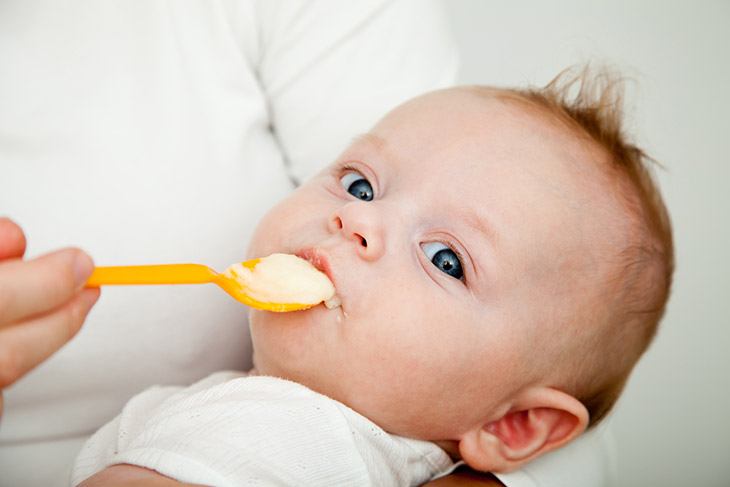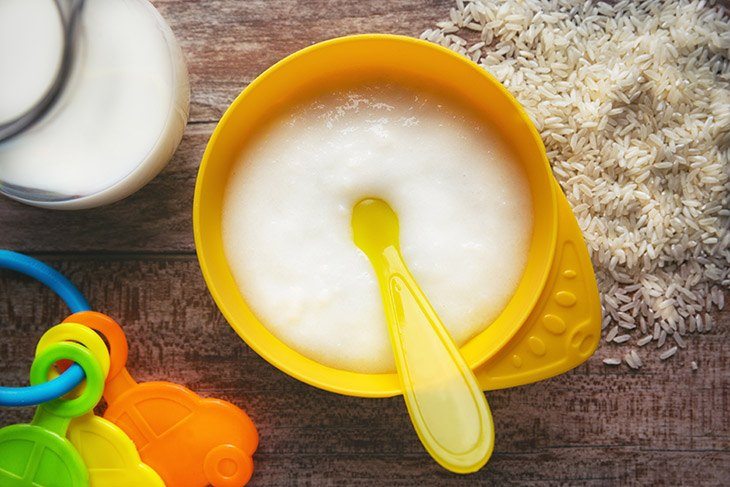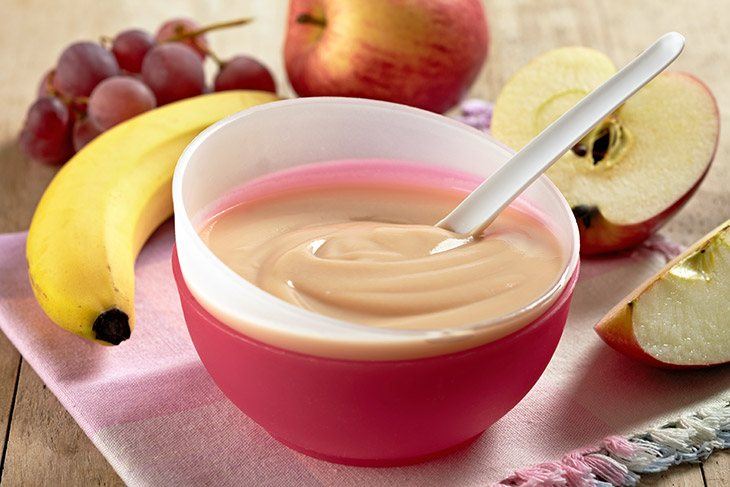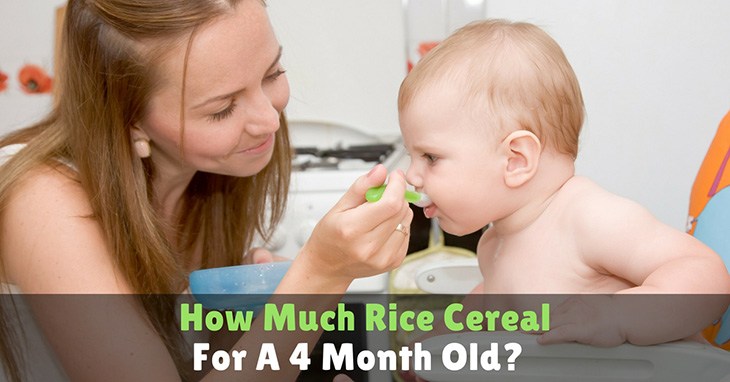Introducing Solids: How Much Rice Cereal For A 4 Month Old?
Introducing solid foods is one of the major milestones that your child will pass. While all babies pass this stage, not all babies become ready when they reach four months of age.
Also, there are several important things that you need to take note of before giving your child his or her first taste of solid food.
More...
Is Your Child Ready To Eat Solid Foods?

This question is perhaps the most basic question that parents should ask before introducing solid foods to their children.
Pediatricians recommend exclusive breastfeeding for the first six months of a baby’s life. Supplemental feeding or milk formulas, however, may be given for babies as indicated.
When babies reach 4 to 6 months of age, most of them are ready to start eating solid foods as a complement to formula or breastfeeding. It is during this phase of their lives when babies stop using their tongues to push food out of their mouths. During this stage, babies start to develop coordination in the mouth that allows them to move solid foods from the front part of their mouths to the back for swallowing.
Aside from the age, you can also look for the other signs that indicate that your baby is ready to eat solid foods. Some of these signs include being able to hold his or her head in an upright and steady position, sit with support, and showing some interest in seeing you eat.
If you noticed any of these signs then your baby may be ready to eat solid foods.
What Should You Feed Your Child?
Even if your child is ready to eat solid foods, you should not stop from feeding him or her breast milk or formula milk.
In choosing the type of food to feed your child for the first time, you should start simple. You should offer single ingredient foods that do not contain any salt or sugar. You should also wait at least three to five days before switching to another single ingredient food.
Waiting three to five days before switching from one food to another allows you to see if your baby has any reaction to the type of food that you are feeding him or her. Such reactions may include rash, vomiting, or diarrhea. By knowing the reaction, you will know what type of food your baby is allergic to.After initiating single ingredient feedings, you can start offering them in combinations.
How Much Rice Cereal For A 4 Month Old?

Rice and oatmeal are considered the least allergenic types of grains. Most babies are given rice and oatmeal cereals first.
So, how much rice cereal for a 4 month old? In giving rice cereals to your baby, you should mix one tablespoon of single grain and iron-fortified baby rice cereal with four tablespoons of formula milk or breast milk. You should mix the ingredients well and remember not serve the mixture in a bottle.
Instead, when serving the cereal, you should help and support your baby in an upright position and offer the cereal using a small spoon once a day or twice a day. You can serve one or about two teaspoons of cereal after breastfeeding or formula feeding.
Once your child is able to tolerate the swallowing of this runny cereal, you should start mixing the cereal with less liquid. Also, you can gradually increase the amount of food that you offer. You can even offer a variety of single-grain cereals like oatmeal, rice, and barley.
When Should You Add Fruits and Vegetables?

As you continue to introduce single ingredient foods that do not contain salt or sugar, you can start introducing fruits and vegetables.
In preparing your vegetables and fruits, you can boil and mash or puree the vegetables and fruits. You can begin by pureeing single type of vegetables and then offer fruits.
Like introducing single ingredient cereals, you should wait three to five days before giving a new type of food to your child to check for any reactions. You can combine flavors provided that you are certain that the ingredients do not cause any reaction when eaten by your child.
[Read : 6 Delicious Puree Baby Food Recipes That Are Healthy ]
When Can You Give Finely Chopped Finger Foods?
When your baby reaches eight to ten months, your baby will now be able to handle small pieces of finely chopped foods. This type of foods can come in the form of soft fruits, pasta, vegetables, cheese, baby crackers and dry cereals.
As your baby reaches one year, you can begin offering three meals a day along with snacks. You can even offer mashed or finely chopped foods of whatever type of food you are eating.
The Bottom Line
When it comes to introducing solid foods to your baby, you should remember to watch the baby and not the calendar. While most babies start showing interest in eating solid foods as early as four months, not all babies are the same. Your baby may show interest at a later age.
You should not push your child to try solid foods if you think that he or she is not yet ready. If your baby still tries to push solid foods out of his or her mouth during the first tries, this can mean that he or she is not yet ready.
Babies often eat about one to two teaspoons of solid food during the first tries. You should never expect your child to finish a meal. You should always remember that this is actually a new experience for your child.
As your child gets older and starts to eat more, you can gradually increase the portion sizes that you are feeding your child. Also, you should remember that breast milk or formula milk is still the primary source of nutrition for your baby at this phase of his or her life.


